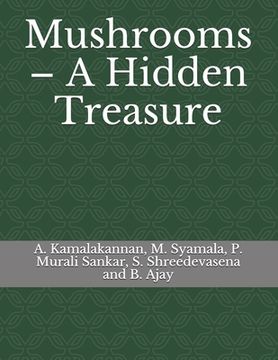Reseña del libro "Mushrooms - A Hidden Treasure (en Inglés)"
Mushroom is a plant constructed with no tissue structures. Which can be a unicellular or a multicellular organism. Although mushroom is a type of plant, they do not contain cellulose and chlorophyll. So, they cannot create their own nutrients, for self-survival and they must have to living on another plants or animals for absorb nutrition from them. We usually only see a part of mushrooms - look like shape of the fruits of the tree. Exactly, mushrooms typically look like umbrellas which have a stem (stipe), a cap (pileus). The contain mushroom seeds called spores. The body of the mushroom in called mycelium and its individual parts are microscopic. The body of the mushroom is dispersed over a relatively large areas and rarely noticed. Mushroom is most often applied to those fungi (Basidiomycota and Agaricomycetes). Include: Edible and poisonous species (Edible and poisonous mushrooms). India is the second most populous country of the world with a population of over 100 crores. Increase in population is creating an alarming situation in the food problem of India. Malnutrition in terms of protein' deficiency is one of the major factors responsible for high mortality and morbidity in this country and other developing countries of the world. Due to population explosion (100 million/year) the problem of protein hunger will become more and more acute. Exploiting non-traditional food resources can make a substantial break-through - to meet the serious food deficit. Mushrooms, yeasts and algal foods are frequently mentioned as alternative sources of food. Of these, mushrooms are the most preferred. In the present circumstances, popularizing mushroom as part and parcel of everyday food is of paramount importance. Modern mushroom culture produces more protein per unit area of land than any other kind of agriculture and technology at present available. The use of mushrooms as food is probably as old as civilization itself. They have been a delicacy since ancient times. The Egyptians regarded them as a food for Pharaohs. The Greeks and Romans described them as 'food for the Gods" and were served only on festive occasions. Reference to mushrooms is found in Vedas. These were earlier preferred for their flavour and taste, while their nutritive value was recognized later. Mushrooms provide a rich addition to the diet in the form of proteins, carbohydrates, minerals and vitamins. The protein content of fresh mushrooms (3g/100g) is about 3.7 percent. It is twice as high as that in most vegetables except green peas, Brussels sprouts and pulses and is much lower to meat, egg, fish and cheese. They have a high percentage of all the nine essential amino acids. They are low in calories (less than 35 K calories per 100 g) with traces of sugar and without cholesterol. These are richer in vitamins (B1, B2, niacin, B12, pantothenic acid and vitamin C) than most vegetables and almost free from fat (0.2g/100g). They are also a good source of minerals like, phosphorus, potassium and iron. Thus, they serve a valuable source of nutritive and protective food.

